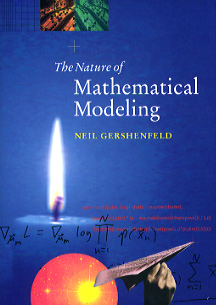
The Nature of Mathematical Modeling
class: Thursdays 1:00-4:00 E14-493
section: Mondays 5:00-6:00 E14-493
Neil Gershenfeld
MAS 864
2023

This course will answer these questions, and many more, with a survey of the range of levels of description for analytical, numerical, and data-driven mathematical modeling. The focus will be on understanding how these methods relate, and on how they can be implemented efficiently.
The schedule will be:
| Contents | |
| 2/9: | Mathematical Computing, Benchmarking, Linear Algebra and Calculus |
| 2/16: | Ordinary Differential and Difference Equations |
| Partial Differential Equations | |
| 2/23: | Random Systems |
| Variational Principles | |
| 3/2: | Finite Differences: Ordinary Differential Equations |
| 3/9: | Finite Differences: Partial Differential Equations |
| 3/16: | Finite Elements |
| 3/23: | Discrete Elements |
| 3/30: | Spring Vacation |
| Computational Geometry | |
| 4/6: | Function Fitting |
| 4/13: | Transforms |
| Filtering and State Estimation | |
| 4/20: | Functions |
| Density Estimation | |
| 4/27: | Search |
| 5/4: | Machine Learning Architectures |
| 5/11: | Constrained Optimization |
| 5/22: | Final Projects |
| References |
Relevant background for each of these areas will be covered. The assignments will include problem sets, programming tasks, and a semester modeling project. The course is based on the text The Nature of Mathematical Modeling, with draft revisions for a second edition to be provided throughout the semester.